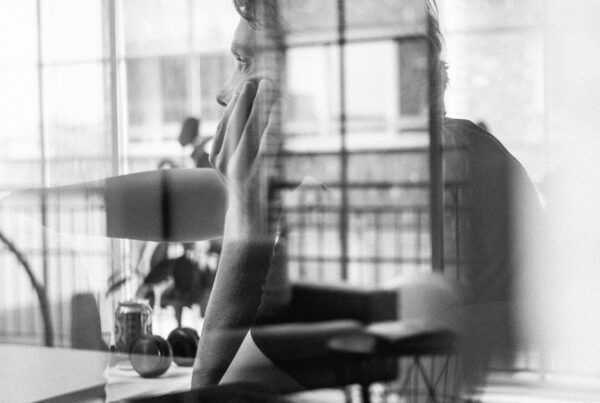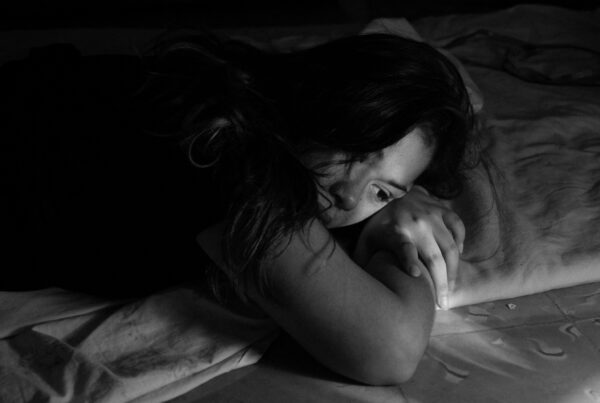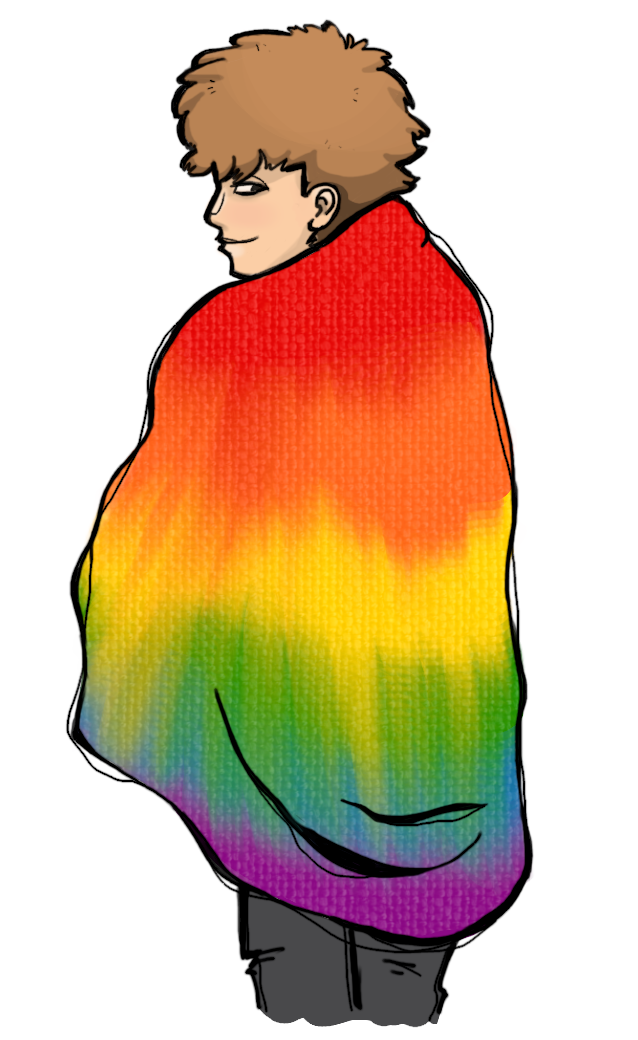
One can hardly think of the LGBTQ community without thinking of the rainbow flag. Walking through the Amsterdam city center, no symbol expresses diversity more clearly than the six-colored flag. Yet as deeply linked to the LGBTQ community as it is now, it’s only a relatively recent symbol that coincides with – and may have reinforced – the rise of the community itself. How did the flag originally come about, and what influence does it have today?
One can hardly think of the LGBTQ community without thinking of the rainbow flag. Walking through the Amsterdam city center, no symbol expresses diversity more clearly than the six-colored flag. Yet as deeply linked to the LGBTQ community as it is now, it’s only a relatively recent symbol that coincides with – and may have reinforced – the rise of the community itself. How did the flag originally come about, and what influence does it have today?

Illustration by Carolien de Bruin

Illustration by Carolien de Bruin
On the 25th of June 1978, the original rainbow flag made its debut at the San Francisco’s Gay Freedom Day Parade. As a new symbol for the gay rights movement, the flag had to compete with the pink triangle, which had a heavy history. The triangle was used by the Nazis, who attached it to the clothing of men being imprisoned in concentration camps for their homosexuality. After the second world war, the pink triangle was stripped of its intended humiliation and started to become a sign of pride and the most used image for gay rights movements (Morgan, 2019).
The new symbol, the rainbow flag, was designed on the initiative of Harvey Milk, who thought that reusing the pink triangle was inappropriate, as it was stemming from this dark and painful past and felt forced upon the community. Milk, one of the first openly gay politicians, wanted the new flag to be displayed at the annual pride parade in San Francisco (Grovier, 2016) and gave the task of designing it to Gilbert Baker, a former Vietnam-war veteran and then drag-performer. Baker didn’t have to think long about a design. ‘To me, it was the only thing that could really express our diversity, beauty and our joy. I was astounded nobody had thought of making a rainbow flag before because it seemed like such an obvious symbol for us’, he said 2008 in an interview with The Independent (Huppke, 2017).
With the help of friends, Baker sewed the first flag by hand, compiling eight stripes in different colors, dyed into the fabric. The top of the flag was pink, which represented sex, then came red for life, orange for healing, yellow for the sunlight, green for nature, turquoise for art, indigo for harmony, and finally, at the very bottom, violet for spirit. Baker saw the flag as a symbol of diversity, representing all the ways people differ from each other (Bos, 2020). And when it was flowing over people’s heads for the first time in 1978, the flag exceeded all expectations he had: ‘I saw immediately how everyone around me owned that flag. I thought: ‘It’s better than I ever dreamed’ (Drash, 2015). Having led to an overwhelming reaction at the parade, Baker wanted the flag to be reproduced and took it to the Paramount Flag Company. During the process the pink and turquoise colors were replaced by blue. Hot pink was a difficult fabric to get hold of at the time and turquoise had to fade when organizers of the 1979 pride parade tried to split the flag into two, to decorate either side of their parade route (Wareham, 2020).
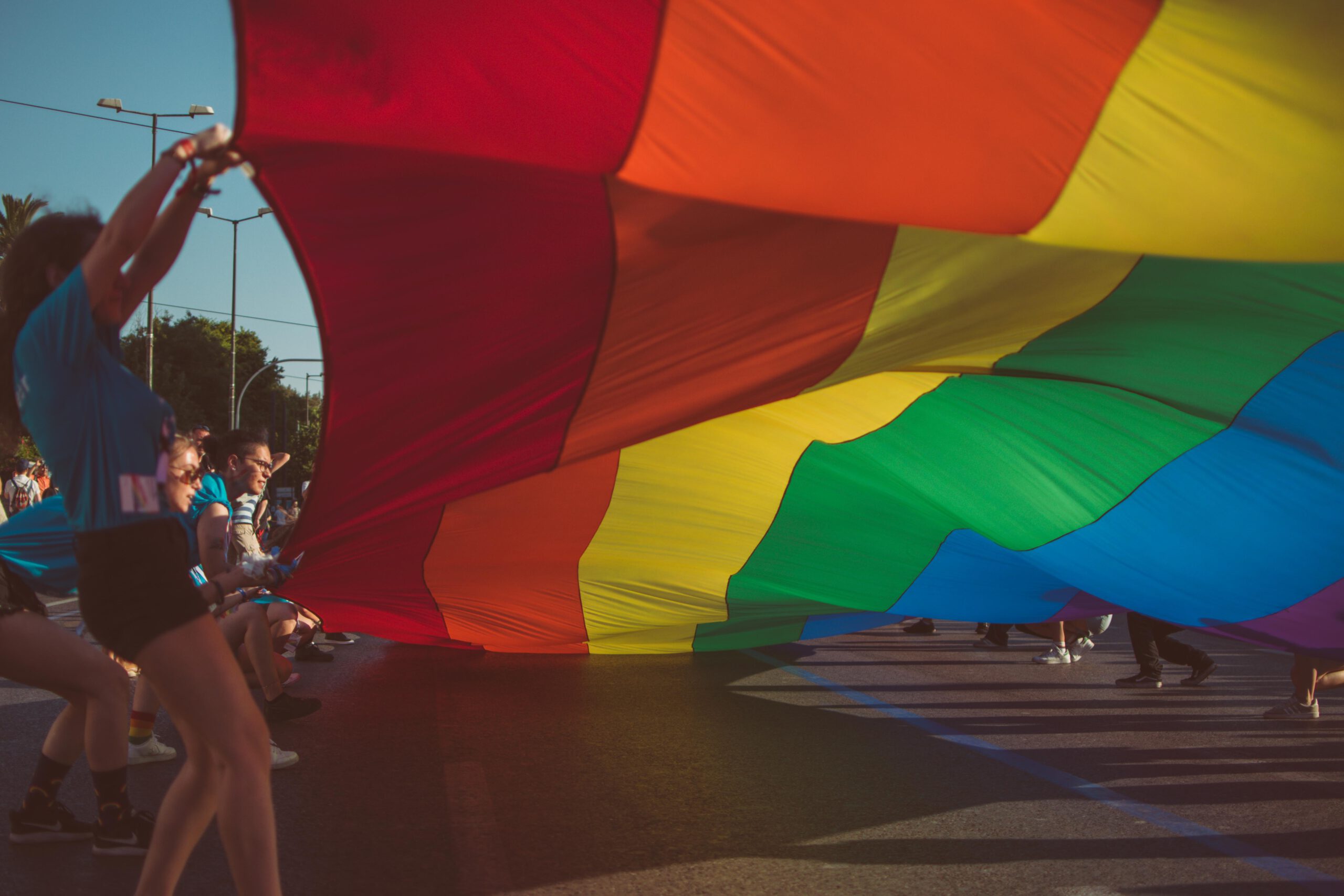
Harvey Milk, who had commissioned the flag from Baker, was killed by a political opponent in November 1978, which only increased the demand for the flag. But only in 1994 the rainbow flag was really established as the symbol for LGBTQ pride, when Baker made a mile-long version of the flag for the 25th anniversary of the Stonewall riots (Morgan, 2019). These riots were a reaction to raids of gay clubs and bars in New York City in 1969. As the 1960s were not a very welcoming time for LGBTQ Americans due to an anti-gay legal system, lots of people went to bars and clubs to seek rescue and find a place where they could express themselves openly without having to worry. When in 1969 the New York City police raided the Stonewall Inn, a gay club, a riot started, ending in six days of protests and violent clashes with the police outside the bar on Christopher Street. These demonstrations were later called the Stonewall riots.
The display of the enormous one-mile rainbow flag, 25 years after this memorable day, marked the starting point of the rising spread of the flag. Whether it is used as a Facebook filter or flowing at the first ever gay pride rally in Ukraine, the rainbow flag has become an indispensable symbol. Not only for joy and pride, but also for overcoming the obstacles, problems and injustices that members of the LGBTQ community have had to – and still have to – face.
The rainbow flag fulfils even more functions. By using the flag, one can demonstrate and express their belonging to the transnational LGBTQ community. A transnational community is a group of people who share certain characteristics and can connect with each other, beyond the borders of countries and states. The flag represents that the person builds a conscious connection to this group – or at least an imagined idea of this group (Klapeer & Laskar, 2018). Watney (1995) called this an “imaginary unification” (p.60): a group of people who feel united based on shared experiences – for example discrimination, violence, and trans-/inter-/ and homophobia – and maintain a sense of belonging across time and space. This unification can be represented by a symbol, one that is not connected to states or borders, and the rainbow flag fulfils this task for the LGBTQ community.
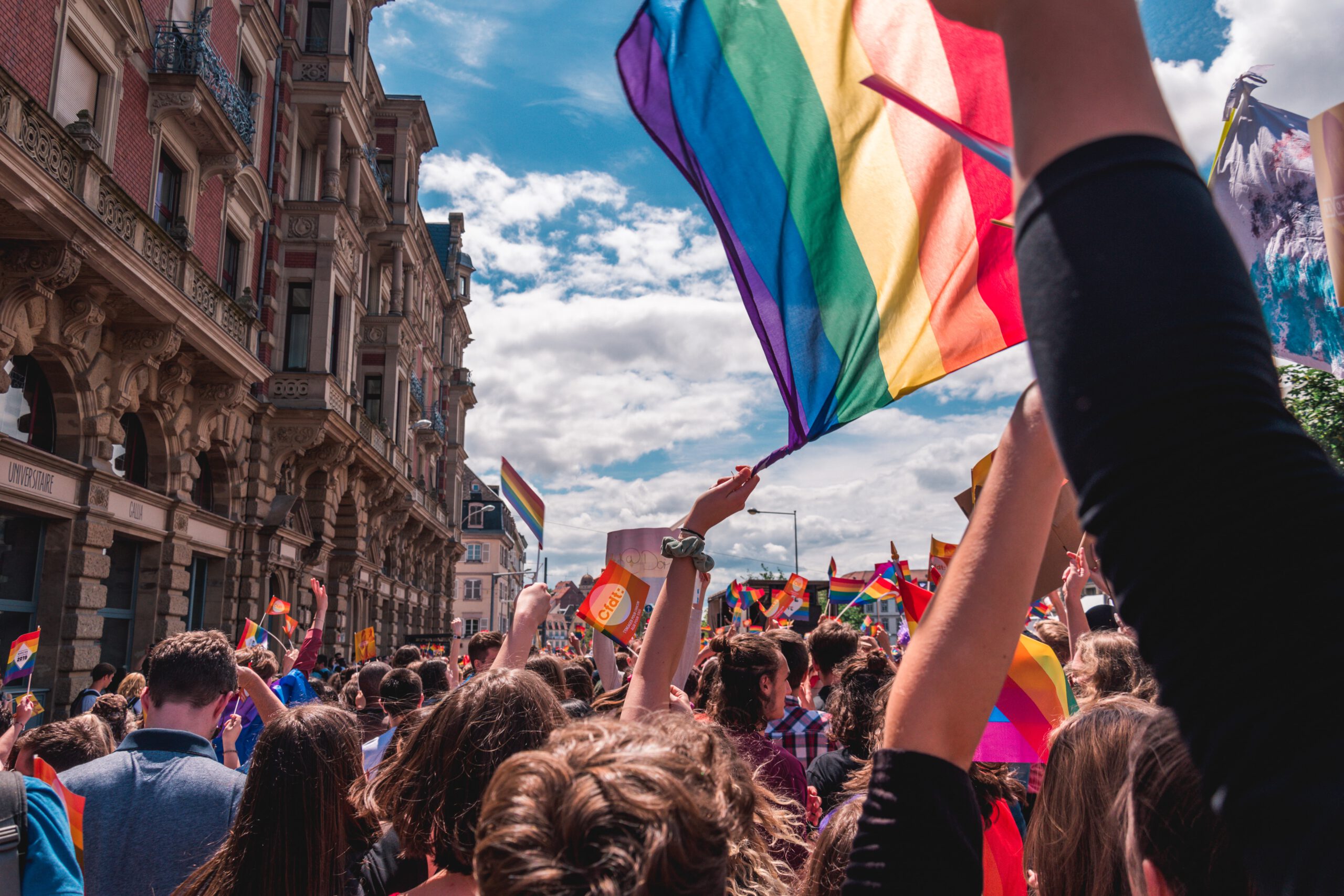
The unification creates an ‘in-group’ for the people who psychologically identify themselves as being a member of this community (Tropp & Wright, 2001). However, there are also people who identify themselves as LGBTQ but do not feel included in this transnational community, not perceiving this community as their in-group. As a result, those people also seldom feel represented by the rainbow flag (Alm & Martinsson, 2016). They are rather perceiving the ‘rainbow flag community’ as an ‘out-group’, as a social group they do not identify with (Tropp & Wright, 2001).
One reason for this feeling is probably grounded in the fact that not everyone can freely express that they identify themselves as LGBTQ without having to face serious consequences. Unsurprisingly, this makes it hard to feel like ‘being a part’ of the community. In many countries and regions around the world it is not possible to openly express one’s sexuality when it is not heterosexual. Even the display of a rainbow flag can be life threatening. While demonstrating peacefully under the rainbow flag in November 2020, people in Belarus were grabbed and thrown into jail by the police, without an explanation. They were beaten, insulted and threatened, while the actions of the police were not only tolerated but incited by the government (Darida, 2020). In southeastern Poland, more and more regions are declaring themselves ‘LGBTQ-free zones’ and politicians are talking about ‘Protecting our children from LGBTQ ideology’ (Krökel, 2020). And this is only a fraction of what people have to endure. It is easy to imagine that living your life under such circumstances does not make you feel like belonging to the same community that is – for example – celebrating at the Amsterdam Gay Pride every year. The feeling of not having the same rights, opportunities and chances yourself paves the way to feel excluded, if not neglected, by the ones who do. The access to the transnational community is not easily possible. Having to live with that, you may not feel represented by the rainbow flag, as it stands for a community that you do not see as your in-group – and that you may feel neglected by with all your local struggles (Alm & Martinsson, 2016). Therefore, this ‘imaginary unification’ (Watney, 1995) does not really work for everyone – and not everyone who identifies as LGBTQ also feels represented by the rainbow flag to the same extent.
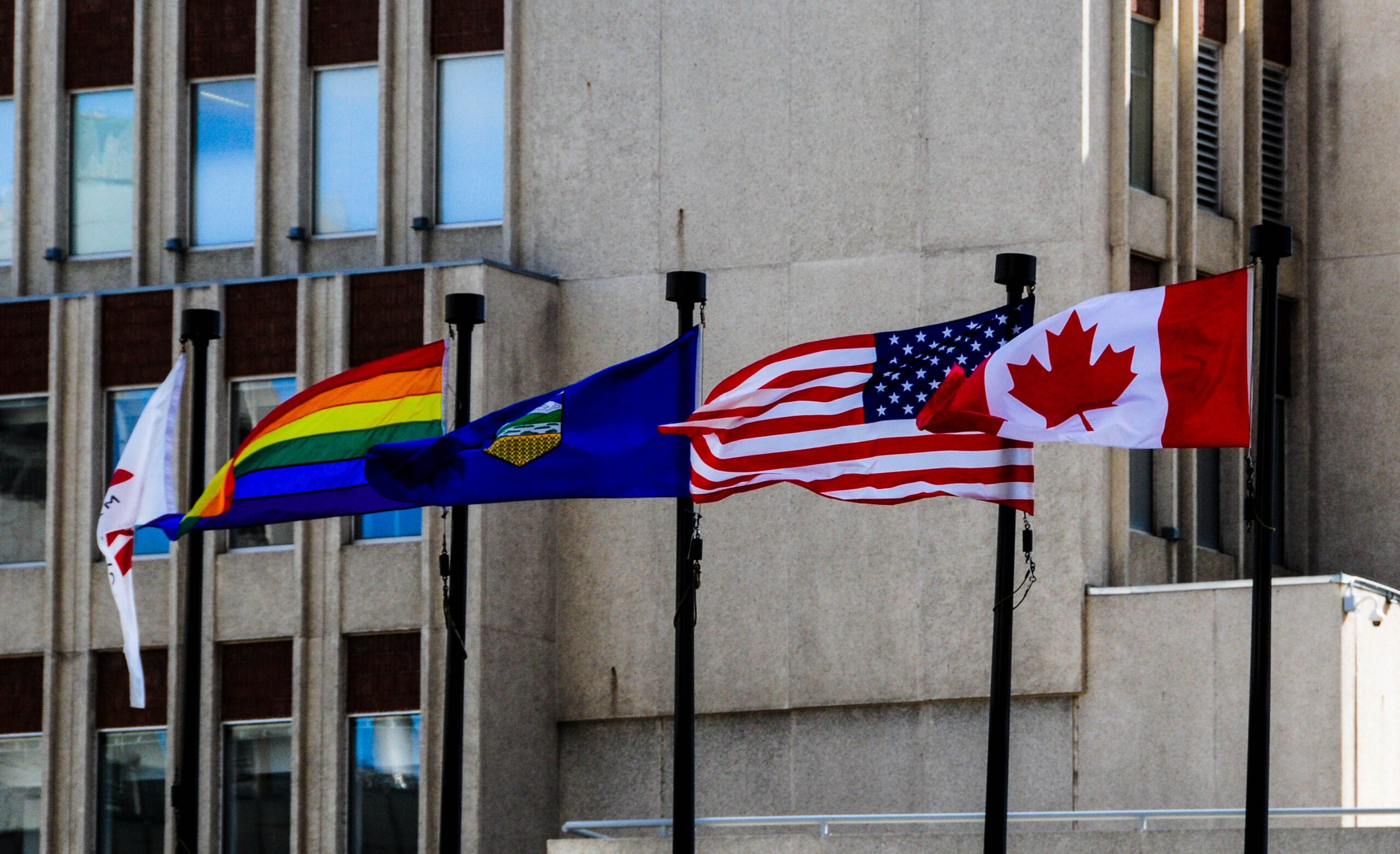
Undoubtedly, a topic that has to be mentioned when talking about the rainbow flag is politics. The flag was never an apolitical symbol, and it became an icon for politics of hope, the demand for a safe home and a community that embraces LGBTQ rights and inclusivity. However, while a wide range of political actors use it for their campaigns, trying to demonstrate their commitment to diversity and tolerance, they are not all truthful about it. While campaigning for presidency, Donald Trump enrolled a rainbow flag on which was written ‘LGBTs for Trump’. However, at the same time, he worked zealingly to restrict LGBTQ rights in America, such as letting several states ban transgender people from using the bathroom of their gender identity or opposing the Supreme Court decision that legalized same-sex marriage nationwide (Guilford, 2016). So, while his supporters were promoting his ‘landmark’ on social media, all Trump really did was “Flag-waving” for his idea of America, which was sadly not as accepting and supporting as he claimed by holding the flag in his hands.
And not only politicians use the rainbow flag to beat out the good for themselves. Many companies, organizations and restaurants try to brand themselves as ‘LGBTQ-friendly’ by using the rainbow flag, hanging it in front of their windows and selling ‘special LGBTQ offers’ when the week of the pride parade in their city arrives (Mulinari et al., 2016). While it cannot be dismissed that some of them really mean what they display and truthfully want to show solidarity, the trend turned the flag into a capitalized symbol, signifying tolerance and diversity – but it is hard to distinguish whether it is for the sake of showing solidarity and support or attracting as many consumers as possible.
It has now been over 40 years that Baker came up with the design of the flag in 1978. Back then, he certainly could not have foreseen the impact this symbol would have – and which discussions it would bring about. While creating a visible, transnational community, based on shared experiences that allows a sense of belonging, the issues discussed should not be waved away easily. Although the pink triangle is history by now, it is still a long way to go to an equal, inclusive society.
References
-Alm, E. & Martinsson, L. (2016). The Rainbow Flag as Friction: Transnational, Imagined Communities of Belonging among Pakistani LGBTQ Activists. Culture Unbound, 8(3), 218–239. doi: 10.3384/cu.2000.1525.1683218
-Bos, R. (2020, July 20). Sinds wanneer koppelen we de regenboogvlag aan homorechten? Quest. https://www.quest.nl/maatschappij/cultuur/a33400932/hoe-is-regenboogvlag-ontstaan-gaypride/
-Darida, M. (2020, November 2). Queere Menschen in Belarus: “Sie sagten mir, wie ekelhaft und hässlich ich sei“. Zeit Campus. https://www.zeit.de/campus/2020-10/queer-menschen-belarus-proteste-anfeindungen-diskriminierung-verhaftung-folter-homophobie
-Drash, W. (2015, June 30). Rainbow flag maker was inspired by Bible. CNN. https://edition.cnn.com/2015/06/30/us/rainbow-flagmaker-gilbert-baker/index.html
-Guilford, G. (2016, October 31). Donald Trump’s “support” of LGBT communities in one image. Quartz News. https://qz.com/823649/donald-trump-unfurled-a-rainbow-flag-with-lgbt-written-on-it-at-a-rally-in-greeley-colorado-to-express-his-so-called-support/
-Grovier, K. (2016, June 6). The history of the rainbow flag. BBC. https://www.bbc.com/culture/article/20160615-the-history-of-the-rainbow-flag
HISTORY.COM Authors (2020, June 26). Stonewall Riots. HISTORY. https://www.history.com/topics/gay-rights/the-stonewall-riots
-Huppke, R. (2017, April 3). Sorry, LGBT community. God wants the rainbow back. Chicago Tribune. https://www.chicagotribune.com/columns/rex-huppke/ct-rainbow-flag-god-fischer-huppke-20170403-story.html
-Klapeer, C. M. & Laskar, P. (2018). Transnational ways of belonging and queer ways of being. Exploring transnationalism through the trajectories of the rainbow flag. Identities, 25(5), 524-541. doi: 10.1080/1070289X.2018.1507958
-Krökel, U. (2020, June 14). Aus Hass auf die Gleichheit. Zeit Online. https://www.zeit.de/politik/ausland/2020-06/polen-lgbt-freie-zonen-praesidentschaftswahl-andrzej-duda-jaroslaw-kaczynski
-Morgan, T. (2019, June 6). How Did the Rainbow Flag Become an LGBT Symbol? HISTORY. https://www.history.com/news/how-did-the-rainbow-flag-become-an-lgbt-symbol
-Mulinari, D., Laskar, P. & Johansson, A. (2016). Decolonising the Rainbow Flag. Culture Unbound, 8(3). 193–216. doi:10.3384/ cu.2000.1525.1683
-Tropp, L.R. & Wright S.C. (2001). Ingroup Identification as the Inclusion of Ingroup in the Self. Personality and Social Psychology Bulletin, 27(5), 585-600. doi:10.1177/0146167201275007
-Wareham, J. (2020, May 6). Why Some LGBT+ People Feel Uneasy At The Sight Of NHS Rainbow Flags. Forbes Magazine. https://www.forbes.com/sites/jamiewareham/2020/05/06/should-the-lgbt-community-call-out-nhs-appropriation-of-rainbow-flag/?sh=6fdbeb76d544
-Watney, S. (1995). AIDS and the Politics of Queer Diaspora. Negotiating Lesbian and Gay Subjects, 53–70. New York: Routledge.
On the 25th of June 1978, the original rainbow flag made its debut at the San Francisco’s Gay Freedom Day Parade. As a new symbol for the gay rights movement, the flag had to compete with the pink triangle, which had a heavy history. The triangle was used by the Nazis, who attached it to the clothing of men being imprisoned in concentration camps for their homosexuality. After the second world war, the pink triangle was stripped of its intended humiliation and started to become a sign of pride and the most used image for gay rights movements (Morgan, 2019).
The new symbol, the rainbow flag, was designed on the initiative of Harvey Milk, who thought that reusing the pink triangle was inappropriate, as it was stemming from this dark and painful past and felt forced upon the community. Milk, one of the first openly gay politicians, wanted the new flag to be displayed at the annual pride parade in San Francisco (Grovier, 2016) and gave the task of designing it to Gilbert Baker, a former Vietnam-war veteran and then drag-performer. Baker didn’t have to think long about a design. ‘To me, it was the only thing that could really express our diversity, beauty and our joy. I was astounded nobody had thought of making a rainbow flag before because it seemed like such an obvious symbol for us’, he said 2008 in an interview with The Independent (Huppke, 2017).
With the help of friends, Baker sewed the first flag by hand, compiling eight stripes in different colors, dyed into the fabric. The top of the flag was pink, which represented sex, then came red for life, orange for healing, yellow for the sunlight, green for nature, turquoise for art, indigo for harmony, and finally, at the very bottom, violet for spirit. Baker saw the flag as a symbol of diversity, representing all the ways people differ from each other (Bos, 2020). And when it was flowing over people’s heads for the first time in 1978, the flag exceeded all expectations he had: ‘I saw immediately how everyone around me owned that flag. I thought: ‘It’s better than I ever dreamed’ (Drash, 2015). Having led to an overwhelming reaction at the parade, Baker wanted the flag to be reproduced and took it to the Paramount Flag Company. During the process the pink and turquoise colors were replaced by blue. Hot pink was a difficult fabric to get hold of at the time and turquoise had to fade when organizers of the 1979 pride parade tried to split the flag into two, to decorate either side of their parade route (Wareham, 2020).

Harvey Milk, who had commissioned the flag from Baker, was killed by a political opponent in November 1978, which only increased the demand for the flag. But only in 1994 the rainbow flag was really established as the symbol for LGBTQ pride, when Baker made a mile-long version of the flag for the 25th anniversary of the Stonewall riots (Morgan, 2019). These riots were a reaction to raids of gay clubs and bars in New York City in 1969. As the 1960s were not a very welcoming time for LGBTQ Americans due to an anti-gay legal system, lots of people went to bars and clubs to seek rescue and find a place where they could express themselves openly without having to worry. When in 1969 the New York City police raided the Stonewall Inn, a gay club, a riot started, ending in six days of protests and violent clashes with the police outside the bar on Christopher Street. These demonstrations were later called the Stonewall riots.
The display of the enormous one-mile rainbow flag, 25 years after this memorable day, marked the starting point of the rising spread of the flag. Whether it is used as a Facebook filter or flowing at the first ever gay pride rally in Ukraine, the rainbow flag has become an indispensable symbol. Not only for joy and pride, but also for overcoming the obstacles, problems and injustices that members of the LGBTQ community have had to – and still have to – face.
The rainbow flag fulfils even more functions. By using the flag, one can demonstrate and express their belonging to the transnational LGBTQ community. A transnational community is a group of people who share certain characteristics and can connect with each other, beyond the borders of countries and states. The flag represents that the person builds a conscious connection to this group – or at least an imagined idea of this group (Klapeer & Laskar, 2018). Watney (1995) called this an “imaginary unification” (p.60): a group of people who feel united based on shared experiences – for example discrimination, violence, and trans-/inter-/ and homophobia – and maintain a sense of belonging across time and space. This unification can be represented by a symbol, one that is not connected to states or borders, and the rainbow flag fulfils this task for the LGBTQ community.

The unification creates an “in-group” for the people who psychologically identify themselves as being a member of this community (Tropp & Wright, 2001). However, there are also people who identify themselves as LGBTQ but do not feel included in this transnational community, not perceiving this community as their in-group. As a result, those people also seldom feel represented by the rainbow flag (Alm & Martinsson, 2016). They are rather perceiving the ‘rainbow flag community’ as an “out-group”, as a social group they do not identify with (Tropp & Wright, 2001).
One reason for this feeling is probably grounded in the fact that not everyone can freely express that they identify themselves as LGBTQ without having to face serious consequences. Unsurprisingly, this makes it hard to feel like ‘being a part’ of the community. In many countries and regions around the world it is not possible to openly express one’s sexuality when it is not heterosexual. Even the display of a rainbow flag can be life threatening. While demonstrating peacefully under the rainbow flag in November 2020, people in Belarus were grabbed and thrown into jail by the police, without an explanation. They were beaten, insulted and threatened, while the actions of the police were not only tolerated but incited by the government (Darida, 2020). In southeastern Poland, more and more regions are declaring themselves “LGBTQ-free zones” and politicians are talking about “Protecting our children from LGBTQ ideology” (Krökel, 2020). And this is only a fraction of what people have to endure. It is easy to imagine that living your life under such circumstances does not make you feel like belonging to the same community that is – for example – celebrating at the Amsterdam Gay Pride every year. The feeling of not having the same rights, opportunities and chances yourself paves the way to feel excluded, if not neglected, by the ones who do. The access to the transnational community is not easily possible. Having to live with that, you may not feel represented by the rainbow flag, as it stands for a community that you do not see as your in-group – and that you may feel neglected by with all your local struggles (Alm & Martinsson, 2016). Therefore, this “imaginary unification” (Watney, 1995) does not really work for everyone – and not everyone who identifies as LGBTQ also feels represented by the rainbow flag to the same extent.

Undoubtedly, a topic that has to be mentioned when talking about the rainbow flag is politics. The flag was never an apolitical symbol, and it became an icon for politics of hope, the demand for a safe home and a community that embraces LGBTQ rights and inclusivity. However, while a wide range of political actors use it for their campaigns, trying to demonstrate their commitment to diversity and tolerance, they are not all truthful about it. While campaigning for presidency, Donald Trump enrolled a rainbow flag on which was written “LGBTs for Trump”. However, at the same time, he worked zealingly to restrict LGBTQ rights in America, such as letting several states ban transgender people from using the bathroom of their gender identity or opposing the Supreme Court decision that legalized same-sex marriage nationwide (Guilford, 2016). So, while his supporters were promoting his ‘landmark’ on social media, all Trump really did was “Flag-waving” for his idea of America, which was sadly not as accepting and supporting as he claimed by holding the flag in his hands.
And not only politicians use the rainbow flag to beat out the good for themselves. Many companies, organizations and restaurants try to brand themselves as ‘LGBTQ-friendly’ by using the rainbow flag, hanging it in front of their windows and selling ‘special LGBTQ offers’ when the week of the pride parade in their city arrives (Mulinari et al., 2016). While it cannot be dismissed that some of them really mean what they display and truthfully want to show solidarity, the trend turned the flag into a capitalized symbol, signifying tolerance and diversity – but it is hard to distinguish whether it is for the sake of showing solidarity and support or attracting as many consumers as possible.
It has now been over 40 years that Baker came up with the design of the flag in 1978. Back then, he certainly could not have foreseen the impact this symbol would have – and which discussions it would bring about. While creating a visible, transnational community, based on shared experiences that allows a sense of belonging, the issues discussed should not be waved away easily. Although the pink triangle is history by now, it is still a long way to go to an equal, inclusive society.

